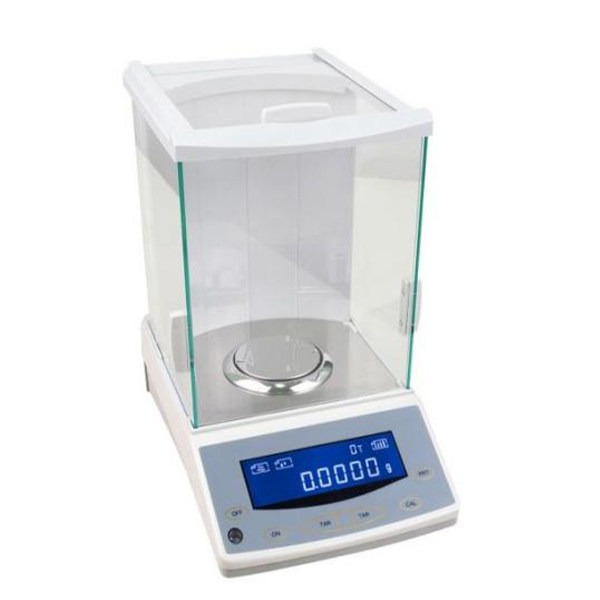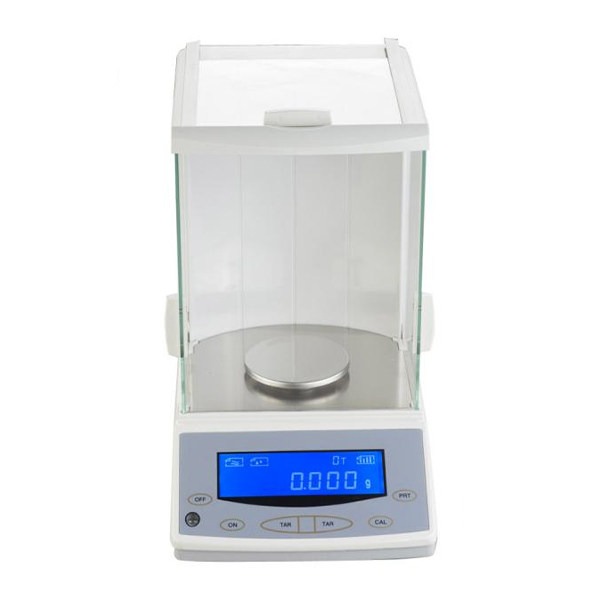What Are Commonly Asked Questions About Laboratory Analytical Balance
The balance is a popular piece of laboratory equipment. Have you ever experienced any doubts about your daily operations? Let's look at the "9 Questions of Laboratory Analytical Balances".

1. Is it necessary for the laboratory to construct a dedicated balance chamber to house the thousandth analytical balance?
The temperature should not be more than 30 degrees Celsius, the humidity should not be higher than 85%, and the temperature difference during operation should not be greater than 5 degrees Celsius. However, whether it may be installed directly in the test room or on a separate platform should take into account whether the room is subject to effects such as corrosive gas, vibration, and airflow.
2. Should the silica gel in the electronic balance be updated on a regular basis, and if so, how frequently?
Experts advise against using desiccant in the balance and instead to control the temperature and humidity between the balance. To put it another way, it is based on the actual scenario, and half of the discolouration will need to be replaced.
3. How should an analytical balance be calibrated?
For around 2-3 hours, the balance should be warmed.
If the balance is not level, it should be changed.
When there is nothing to weigh on the balance's weighing pan, it should display the zero position consistently.
To begin the internal calibration function of the balance, press the "CAL" key, and the electronic balance will display "C" later, indicating that the internal calibration is in progress.
When the electronic lab balance display shows a zero position, the balance should have been calibrated.
4. Do different precision classes of analytical balances serve different purposes?
The accuracy has decreased, and the process preparation test has been completed.
Do technical testing at 1/1000th.
Do the above test and the chemical analysis test at 1/10,000.
Do instrumental analysis at 1/100,000 scale.
For instrumental analysis, the accuracy is one in a million.
5. Does the usage of weighing paper impact the analytical balance's measuring results?
If the sample is too small to be weighed, it may be impacted by buoyancy and static electricity during weighing, resulting in unreliable weighing findings.
The weighing paper's outer edge extends beyond the range of the weighing pan, causing the weighing center of gravity to move.
Other than the weighing pan, the weighing paper comes into contact with other parts, resulting in erroneous weighing readings.

6. Is the scale's last digit a suspicious number?
Ordinarily, the last digit is the display division value d, which is an approximate value, and the penultimate digit is the real division value e, which is an exact value. However, there are certain exceptions: some balances e=d, in which case the last digit is the actual number.
7. Under the condition that the balance does not exceed the range, why can’t the required medicine be directly weighed in a beaker?
Laboratory analytical balances are precision instruments, and beakers are usually of large mass. Even within the weighing range, pick-and-place affects the accuracy of the balance more than weighing paper. Also has a great effect on balance! Therefore, direct weighing with a beaker is generally not recommended, but not impossible.
8. How can the performance of an electronic balance be judged?
How can we get a low-cost performance balance while purchasing electronic balances?
Stability is classified into two types: long-term stability and immediate stability. Long-term stability indicates that the electronic balance does not change greatly in temperature over time, but instantaneous stability means that the value displayed on the balance after measuring an object is presented immediately and remains unchanged.
After turning on the power, the difference in weight changes of the same additional test object over time is maintained for a long time. The smaller the discrepancy between the following parameters, the more steady the electronic balance's performance.
Linear accuracy: A highly significant indication for measuring electronic balances is the linearity indicator. It mostly relates to the difference between the displayed and absolute values over the whole weighing range.
Even after full-scale calibration, it is difficult to acquire accurate weighing values within the weighing range of a poor-quality electronic balance.
Sensitivity: Refers to the resolution and the time restriction that it reflects. The calibration division value e or the display resolution d are both referred to as resolution.
Smaller values are preferable (more sensitivity). Given the time constraint, the faster the electronic balance increases a sensitivity value after adding a sensitivity value, the better.
9. What do the letters e and d in electronic balances mean?
d is the "actual division value" and is the "calibration division value." Simply defined, the "actual division value" d denotes the readability of the balance, while the "verified division value" e denotes the accuracy of the balance.
- Art
- Causes
- Crafts
- Dance
- Drinks
- Film
- Fitness
- Food
- Juegos
- Gardening
- Health
- Home
- Literature
- Music
- Networking
- Other
- Party
- Religion
- Shopping
- Sports
- Theater
- Wellness
